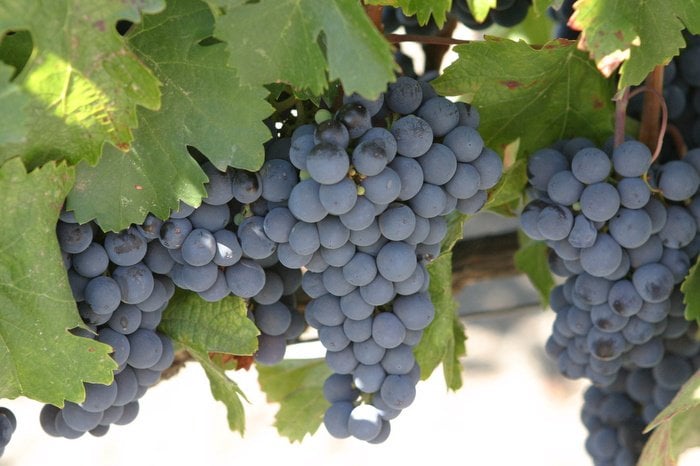Special Report: Thailand’s wine industry at crossroads

SPECIAL REPORT
Though many foreigners, and some Thais, often succumb to strong cravings for fermented grape juice, Thailand’s wine industry is metaphorically, and literally, in ferment. The Kingdom produces a limited amount of premium wine, not nearly enough to satisfy demand. In addition, the import business is riddled with taxes, making fine wines all-the-more expensive.
In steps Thai ingenuity – and the popular, fruity boxed wines.
Patrick Campbell investigates.
PHUKET: Wine accounts for less than 2 per cent of the total alcohol beverage market in Thailand.
The World Health Organization puts it lower. But wine is, according to a Global Agricultural Information Network assessment, enjoyed by 10 per cent of the population. The reason? It is in demand from “farangs”, whose tipple it was back home and who still have a hankering for the stuff, and from affluent Thais who believe that a meal with a glass or two is a sign of social status.
If you’ll pardon the pun, ferment is an appropriate epithet. While there is a perceived demand in Thailand for the fermented grape, the industry is also metaphorically, and literally, in “ferment”.
The Kingdom produces a limited amount of premium wine, not nearly enough to satisfy demand. But the import business is saddled with punitive taxes, making fine wine expensive.
In September 2013, changes to supposedly simplify the liquor-excise tax were implemented. For “wine made from grapes”, a new tariff was set at 1,000 baht per liter of 100-per-cent pure alcohol, or 300 baht per liter of product value – whichever was higher. Products above 600 baht were to be additionally taxed at 36 per cent of the last wholesale price, though budget wines below 600 baht were exempted. So, fine wines were hit particularly hard.
Indeed, one retailer’s expert assessment is that, taking everything into account, “there is over 700 baht in tax on a bottle of [imported] wine sold at 1,000 baht. Thus, if the wine costs 10 dollars [say 310 baht] at source, then the importer is [already] losing money and needs to increase the price to make any sort of profit. Hence the crisis in Thailand’s premium wine industry for bona fide importers.”
As always, amazing Thai ingenuity has found ways and means of getting around these difficulties. If the excise tariffs and taxes are still high, especially on fine wines, and if the country has relatively few premium producers – Chateau de Loei, PB Valley’s Khao Yai Winery and GranMonte (which has received many international awards) are among the most well known – then why not import grape juice or even concentrate in bulk, ferment it here and avoid most of the levied imposts? Or, even more cost-effective, leaven the mix with local ingredients?
Prices for budget wine have also been driven down by the Australian invention of the environmentally-friendly wine box, a device which has not only reduced transport costs from abroad, but, more importantly, has permitted wine to stay drinkable for up to six weeks.
Bottled wine, once opened and exposed to the air, oxidizes and lasts only a day or two, even in the fridge. But the bag in a box, with its polyethylene, metalized bladder and air-locked tap, has signalled a revolution in quaffing culture.
A ubiquitous example which embraces all of these new trends is Mont Clair, a boxed wine familiar to anyone who frequents the liquor section in supermarkets, or hangs out in bars. But where does Mont Clair come from?
According to the label, this fruit wine hails from Breede River Valley, South Africa. The blurb adds, “Our wine makers have selected cabernet sauvignon grapes from South Africa to blend and create a wine for your everyday enjoyment.” What the label does not say, however, is where fermentation actually takes place. Nor does it say if other ingredients have gone into the mix.
The producer is in fact Siam Winery, a massive Bangkok enterprise which handles much of Thailand’s fruit wine production, and whose website boasts a capacity of 1 million units per day.
There are two important clues to understanding the provenance of such wines.
One is the term “fruit wine” and the other is the orange or blue customs seal, an indicator of origin. The term fruit wine is now found on more and more bottles and boxes. It means that native fruit juice, readily available and mellow tasting, is blended with imported grape juice. The result is a quaffable and less tannin-heavy wine, a drink more amenable to a local palate that craves sugary beverages. An added bonus is that it not only skips some of those burdensome taxes, but is cheaper to produce. A winner all around.
Peter Vella is another widely promoted red-fruit wine. Produced in association with Gallo, one of the world’s biggest vintners, the maker states on the container, “We continue a long tradition of Californian wine-making in our family,” adding “it is full of red fruits and berries.”
While there is, again, no outright distortion of the facts, the orange customs seal confirms final processing in Thailand from Californian grapes and possibly other red fruits and berries. As with its stable-mate Mont Clair, it is unclear whether Peter Vella’s fruits and berries are part of a single fermentation process.
What Thai blends have in common is a competitive price, a fruity taste – a recurrent word – and some connection with the noble grape, vitis vinifera, in its various manifestations. As beverages, they are drinkable and alcoholic – to the tune of 11 to 14 per cent.
If the roselle extract, mulberry, blueberry, pomegranate juice or whatever – all rich in vitamin C – is added later, then conceivably the nutritional value of the product is enhanced. A worrisome thought, though, is whether or not other substances have found their way into the mix: sugar to sweeten or promote secondary fermentation, finings to clarify, even raw alcohol to give it more strength.
Not only are consumers ignorant about what exactly goes into these concoctions, they are, in some cases, unaware of where they are made. This is where the customs tag (orange or blue) comes into play.
A blue label signifies a wine that is vinified elsewhere and imported into the Kingdom. This is an important guarantee, because in wine-producing countries such as Australia, consumer laws demand stringent laboratory analysis: without full compliance, no wine is permitted to leave the country.
In orange-tag Thailand however, no one demands a certificate of analysis, so once an entrepreneur becomes involved, the way is left open for him to do whatever he wants. A cheap and cheerful outcome? Yes. But there are potential health risks – a sobering thought.
I do sometimes drink these blends in local bars because that is all they stock. But, I would be far happier if I knew what went into them, or where they were boxed or bottled. If you are a consumer of budget-priced drinks, try to identify the blue seal and drink boxed imported wines such as Castle Creek, Bodegas and Cedar Creek. In theory, these are reaping the benefits of container technology, an Antipodean wine glut and a trade agreement on wines from Oz.
But even here, alarm bells are ringing. Castle Creek, described as a “wine fruit product” contains not only sulfites but also milk and egg. Presumably, these are added during the process of fining, whereby impurities and solids are removed from the bottom of the fermentation tank. While it is reassuring that these additives are at least mentioned, as they are in another fine red wine with fruit juice called Brookford, there is no reference to their possible role as allergens. Milk and egg are two of the world’s top eight causes of allergic reactions.
Even if there has been some progress with ingredient labelling, it is still inconsistent. The use of orange and blue customs seals can also be confusing. For example, Belleville is identified as an Australian wine and carries a blue customs seal. But this wine owes its blue tag not to antipodean grape juice, but to the fact that it is rustled up in Vietnam. Imported, yes, but only from across the border. The grapes may be Australian, but the finished product is not.
Just as the world long ago habituated itself to the taste of Coca-Cola, so its wine lovers are inuring themselves to the fruity delights of a cheap but perplexing product. And the supermarkets are catching on fast. My local Makro has at least 10 examples, mostly boxed, of fruit wine. As for fine wines, crippled by taxes and undermined by smuggling rings that supply many resorts, they are beyond the financial reach of most consumers. No wonder the upscale trade is in crisis.
For those of us in Thailand who yearn for something worthier of the name of fine wine, we continue to pay for the privilege through the nose – or the wallet.
— Patrick Campbell
Latest Thailand News
Follow The Thaiger on Google News:


























